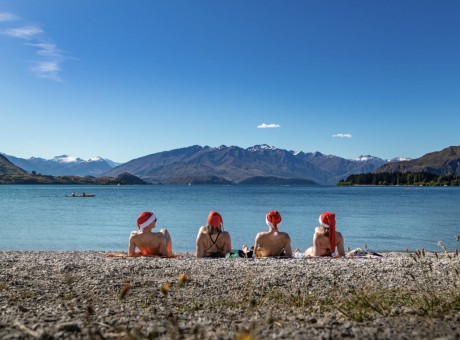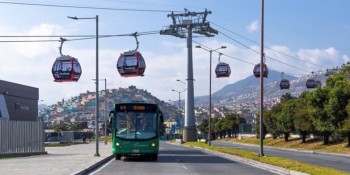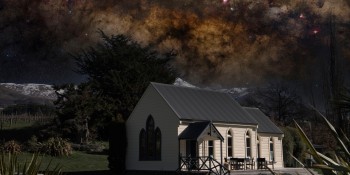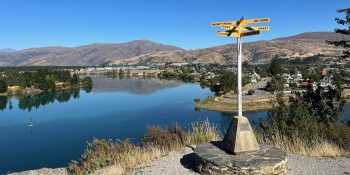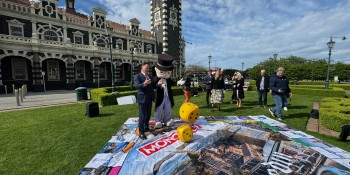Government approves QLDC's $1.47b water plan
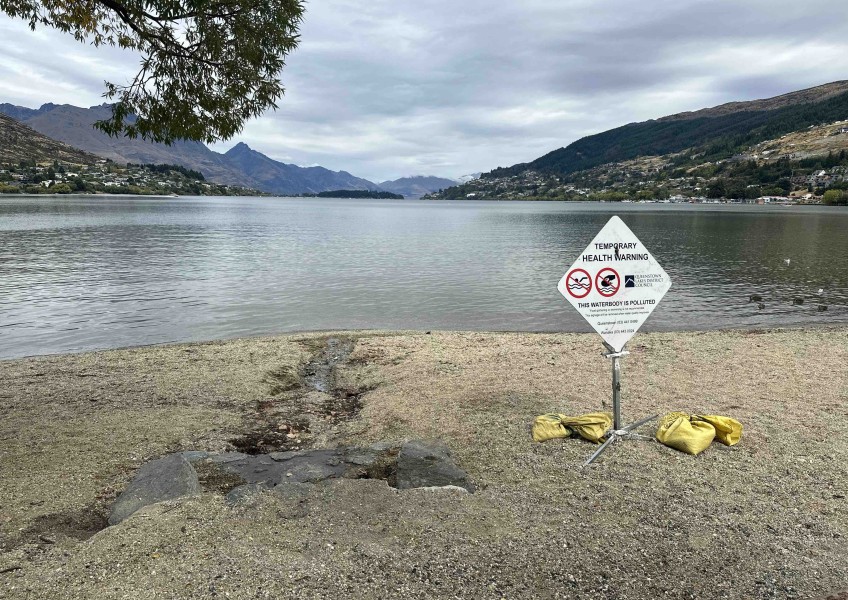
Queenstown Lakes District Council is set to spent $1.47 billion on water services in the next decade according to its now-approved Water Services Delivery Plan.
And the Council-Controlled Organisation due to be set up to deliver water services will take on millions of dollars worth of new debt to help fund new assets, growth and renewals.
QLDC submitted its plan on September 1 following a council decision to create a specific Council Controlled Organisation (CCO) to deliver water services in the district.
The plan was approved by the Department of Internal Affairs in a letter dated November 3. Crux used Google’s Pinpoint tool to help analyse the 114-page document.
The plan outlines $1.47 billion of spend on water services in the next decade, funded through targeted rates, development contributions and borrowing. Of this, $541.6 million will be spent on water supply, $733.6m on wastewater, and $195.6m on stormwater.
“Significant capital investment in the district's water services is planned over the next 30 years to meet levels of service, maintain and renew existing assets, comply with regulatory requirements, and provide for growth and urban development,” the plan says.
In the approval letter Secretary for Local Government Paul James noted certain areas that needed to be monitored during implementation of the council’s plan. These included:
- The water services council-controlled organisation's pricing strategy, including to ensure that growth pays for growth;
- The borrowing requirements and headroom;
- Delivery of the capital programme;
- and delivery of the projects required to achieve regulatory compliance.
Borrowing headroom in the plan is tight – in FY 24/25 it is just 2 per cent or $5.4m below the Local Government Funding Agency’s borrowing limit of 280% of debt to operating revenue.
“The Council has agreed that as this is the level of investment required for water services it is appropriate to utilise a large proportion of QLDC's borrowing headroom to invest in water services ahead of other services that QLDC is responsible for. This is necessary to ensure that water infrastructure adequately supports visitor numbers that double the population on a peak day, and to fill the gap left by development contributions to enable growth,” the plan says.
The delivery of services would be primarily funded by rates, some Government subsidies, development contributions and asset sales – namely $33m from the recent Commonage sale. Borrowing is expected to help fund planned investments, new assets, growth and renewals.
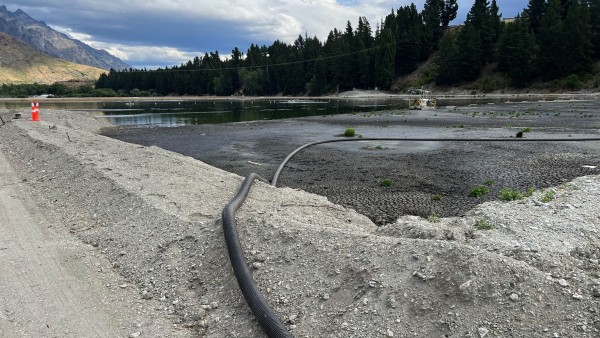
“New assets will be paid for by a mix of borrowing, development contributions, grants and subsidies, capital revenue, and asset sales. Generally, the costs of new assets will not be met from rates, however a portion of the costs of servicing loans will be funded from rates.
“The growth portion of the capital programme will be largely funded by development contributions in the long run but must be funded primarily by debt in the first instance.”
According to the plan, the council, then CCO, will borrow $37.1m in 24/25, increasing to a peak of $121.4m in 28/29 before reducing to $46.7m by 33/34.
As water debt is removed from council books and put onto the new CCO's books, the council will be able to borrow more for other things and remain within its limits. Meanwhile, the Local Government Funding Agency is allowing high growth councils to borrow up to 350 per cent of their total revenue, an increase from the current 280 per cent.
As for a pricing strategy, rates will fund water services until the CCO takes over, at which point the CCO will move to implement fixed charges for households. The plan also includes implementing volumetric charging.
It projects water charges will rise from $1500 in FY24/25 to $4889 in FY33/34 due to the “significant investment needed to maintain, upgrade, and expand water infrastructure to support projected growth”. With projected average household incomes also rising, this represents an increase from 1.1 per cent of household income to 2.3 per cent, the plan says.
The plan also sets aside $715.7m for investment in growth infrastructure.
“The Queenstown Lakes district has experienced significant growth in its resident population, visitors, housing and commercial development and the local economy. This growth generates high levels of subdivision and development activity which places increasing pressure on water assets and services. Significant investment in additional assets and services is therefore required to meet the demands of growth,” it says.
Some of the key spend includes new reticulated wastewater and water supply networks for Ladies Mile, Southern Corridor, and Kingston.
A total of $617.7m is set aside to maintain or improve levels of service. This includes $268.3m for water supply, $285.8m for wastewater and $63.7m for wastewater.
The plan also includes $137.3 million for investment in renewals.
This is made up of regular renewals and ‘other’ renewals, meaning significant renewals as standalone projects or part of larger investments.
Regular renewals are budgeted at $28.3m for water supply, $55.8m for wastewater, $15.1m for stormwater, and ‘other’ renewals are budgeted at $4.5m for water supply, $33.7m for wastewater and $0.04m for stormwater.
Some of the other renewals listed include projects budgeted for the Long-term Plan such as renewing Project Shotover Wastewater Treatment Plant assets, and conveyance assets from both the CBD and Arrowtown to Shotover.
Queenstown’s sewage issues don’t go unaddressed in the plan which outlines the two abatement notices and 11 infringement notices issued for the Shotover Wastewater Treatment Plant.
The plan says the Shotover plant is at “significant risk of non-compliance" with its wastewater consent due to “Disposal field failures causing surface water ponding and runoff contrary to consent Conditions".
It is also at significant risk of non-compliance with its stormwater discharge consent relating to weed control and planting.
The council has already allocated $77.5m through the 2024-2034 Long-Term Plan for a new disposal strategy and plant upgrades at Shotover and this budget is captured in the new Water Services Delivery Plan.
However, the true cost of repairing the Shotover plant remains unknown with a number of options presented to council in May ranging from $20m right up to $250m.
The plan also specifies just how the new water CCO will be established at an estimated cost of $8m funded through debt and repaid over 30 years.
The council expects to recruit a board and chief executive and become legally incorporated between now and the end of February and water services would officially transition to the new CCO from July 2027.
The DIA has also prepared an assessment report on the plan which is due to be published in the coming weeks following a fact-checking process.
Some of the key figures in the plan include:
- Total spend in the next decade on water services will be $1.47 billion funded through targeted rates, development contributions and borrowing.
- Of this, $541.6 million will be spent on water supply, $733.6m on wastewater, and $195.6m on stormwater.
- $715.7m for investment in growth infrastructure.
- $617.7 million to maintain or improve water services levels of service ($268.3m for water supply, $285.8m for wastewater and $63.7m for wastewater).
- $137.3 million for investment in renewals. (Made up of regular renewals budgeted at $28.3m for water supply, $55.8m for wastewater, $15.1m for stormwater, and ‘other’ renewals, meaning more significant renewals, of $4.5m for water supply, $33.7m for wastewater and $0.04m for stormwater)
- Estimated cost of establishing the new CCO will be $8m funded by debt paid off over 30 years.
Projected capital expenditure per year ($m)
|
24/25 |
25/26 |
26/27 |
27/28 |
28/29 |
29/30 |
30/31 |
31/32 |
32/33 |
33/34 |
|
| Water supply |
25.80 |
22.35 |
29.50 |
41.50 |
72.66 |
91.36 |
74.08 |
52.93 |
61.42 |
70.01 |
| Wastewater |
37.32 |
82.67 |
81.30 |
98.25 |
96.48 |
75.41 |
55.44 |
81.67 |
60.50 |
64.57 |
| Stormwater |
8.64 |
11.05 |
12.64 |
17.05 |
19.02 |
29.83 |
34.21 |
31.36 |
15.76 |
16.03 |
| Total |
71.75 |
116.08 |
123.45 |
156.80 |
188.16 |
196.60 |
163.74 |
165.96 |
137.67 |
150.62 |
Main image: A QLDC pollution warning sign





